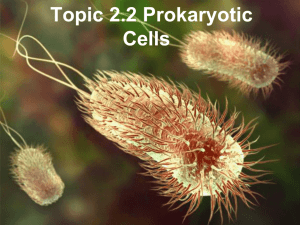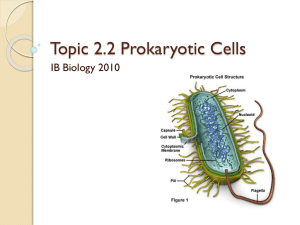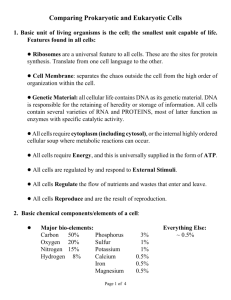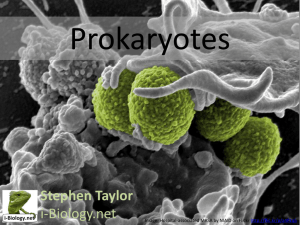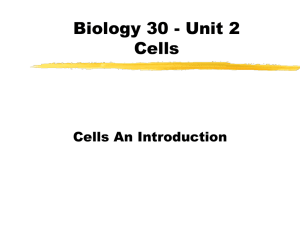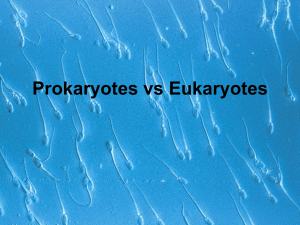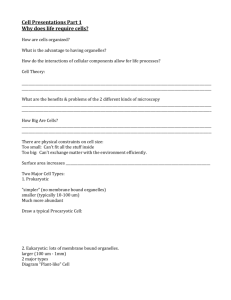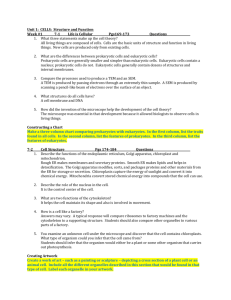PR PROK CELL - Bioenviroclasswiki
advertisement
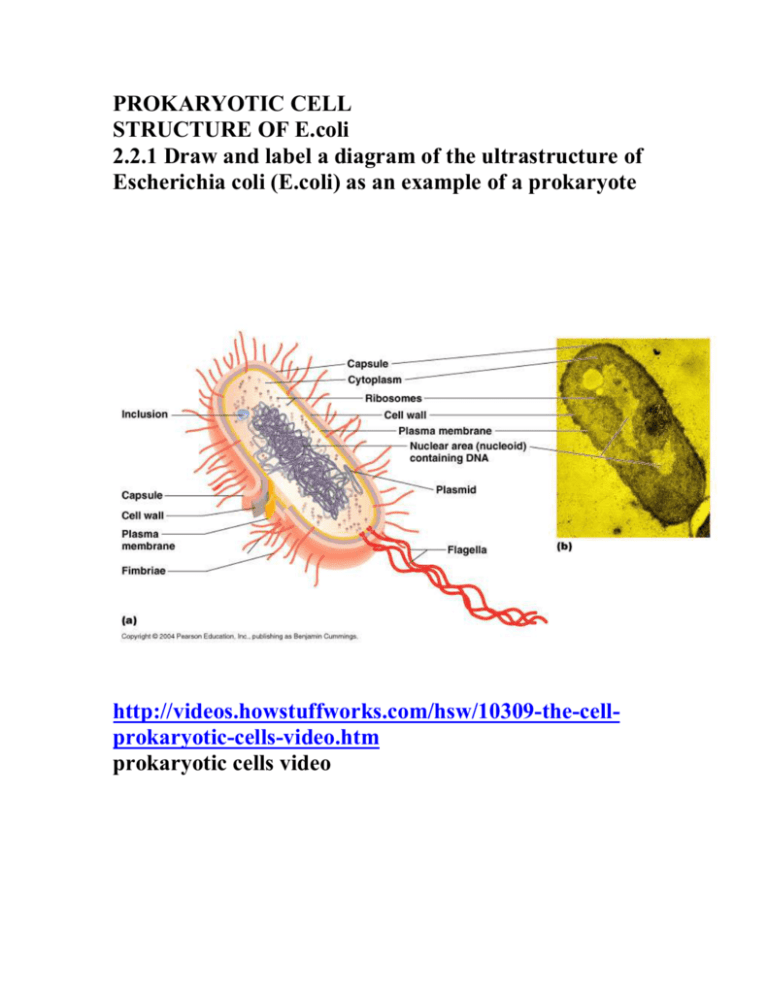
PROKARYOTIC CELL STRUCTURE OF E.coli 2.2.1 Draw and label a diagram of the ultrastructure of Escherichia coli (E.coli) as an example of a prokaryote http://videos.howstuffworks.com/hsw/10309-the-cellprokaryotic-cells-video.htm prokaryotic cells video _ Differences between prokaryotic and Eukaryotic cell Prokaryotic cells Small cells<5micrometers Eukaryotic cells Large cells >10 micrometers Always unicellular No nucleus, membrane bound organelles like mitochondrion DNA is circular, without proteins Often multicellular Always have nucleus and membrane bound organelles DNA is linear, associated with proteins to form chromatin Ribosomes are small (70S) Ribosomes are large (80S) No cytoskeleton Always has cytoskeleton Motility by rigid rotating Motility by flexible waving flagellum made of flagellin cilia or flagellae made of tubulin. Cell division by binary Cell division by mitosis or fission meiosis Reproduction is always Reproduction is asexual or asexual sexual Functions of parts of a prokaryotic cell Cell wall: Outside the plasma membrane of most prokaryotes is present fairly rigid, chemically complex cell wall. Functions: The wall protects the cell and helps maintain its shape. It prevents damage from outside and also bursting if internal pressure is high. In some prokaryotes, another layer, a sticky coat called a capsule surrounds the cell wall and further protects the cell surface. Capsules help glue prokaryotes to surfaces, specific host tissues, such as the surface of a tooth or the lining of small intestine. They are polysaccharide coatings. Plasma membrane: Controls entry and exit of substances, pumping some of them in by active transport. Cytoplasm: Contains enzymes that catalyse the chemical reactions of metabolism and contains DNA in a region called the nucleoid. Pili: pili are proteins that project outward from the bacterial wall . Pili are used to exchange genetic material between bacterial cells. Flagella: Solid protein structures, with a corkscrew shape, projecting from the cell wall, which rotate and cause locomotion (propel the prokaryotic cell through its liquid environment.) Nucleoid: The region of the cytoplasm that contains naked DNA, which is the genetic information of the cell. The nucleoid is not separated from the rest of the cytoplasm by a membrane. Plasmid: Most prokaryotes contain small loops of DNA outside the nucleoid. Some disease causing bacteria possess plasmids that allow them to inactivate antibiotics making them much more difficult to kill. Used in genetic engineering and contains genes resistance to antibiotics. Ribosomes: Structures composed of combination of proteins and RNA. Ribosomes are small granular structures that synthesise proteins by translating messenger RNA. Some proteins stay in the cell and others are secreted. 2.2.3 Identify structures from 2.2.1 in electron micrographs of E.coli. BINARY FISSION 2.2.4 State that prokaryotic cells divide by binary fission. i Prokaryotic cells divide by binary fission. This is an asexual method of reproduction in which the cell divides into two equal sized cells. The cells are genetically identical. During this process, the DNA is copied, the two daughter chromosomes become attached to different regions on the plasma membrane, and the cell divides into two genetically identical daughter cells. What is a disadvantage of the prokaryotic cells having their DNA free in the cytoplasm without a nuclear membrane? The DNA is more vulnerable to the life functions of the cell. These cell functions require enzymes and raw materials, and produce products that may potentially damage the DNA. This creates a greater chance of interactions and mutations or harmful changes. What structures are involved in sexual reproduction in prokaryotic cells? Pili are plasma membrane extensions that serve to allow joining of bacterial cells so that exchange of DNA between cells may occur, thus bringing about sexual reproduction. Examples of prokaryotic cells are bacteria and blue green algae (cyanobacteria) Functions: Nitrogen fixation. Photosynthesis (bacteria contain bacterio chlorophyll) Anaerobic respiration. Fermentation. Decomposition Making of yoghurt, tea i
